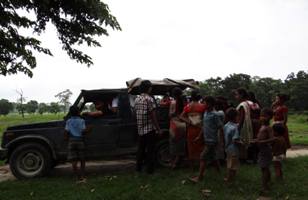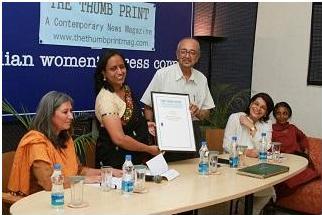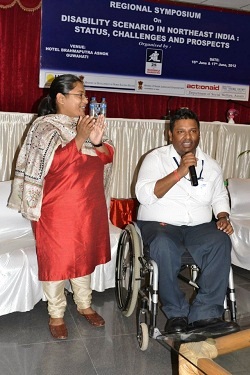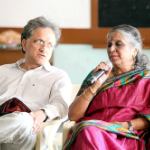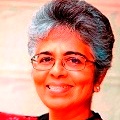India’s immunization programme is one of the largest in the world in terms of beneficiaries Served, vaccinations delivered, geographical spread and diversity of the regions covered1. Universal Immunization Program (UIP) of India currently includes vaccines for TB (BCG), Diphtheria, Pertussis, Tetanus (DPT), Measles, Hepatitis and polio.
The overarching goal of the UIP is to provide immunization services to the children of all the class of society and reduce morbidity and mortality due to vaccine preventable diseases (VPD). But, despite extensive efforts and basic infrastructure, India remains among the nations with the largest number of children who have not received immunization (United Nations Children’s Fund 2007). According to third National Family Health Survey (NFHS-3) conducted in 2004-2005, only 51.5% of children aged 12-23 are partially vaccinated and 5% had received no vaccinations at all.
It is a general perception that with relatively better infrastructure and accessibility of health services, immunization coverage is better in urban settings as compared to their rural counterparts, but this is not the case always. Even within urban areas, a wide disparity exists in the immunization coverage. Socio-economically disadvantaged, particularly those who have migrated from rural areas to urban in search of their livelihood are in more vulnerable conditions because these disadvantaged migrants carry with them a health risk and public health implication due to their epidemiological profile, their exposure to infectious agents, their life style related risk factors, and culture based health beliefs.
The fragmentation of care for migrant children results in unmet needs caused by their frequent mobility, lack of proper housing, poor sanitation, poor diet and their non-registration in either of government run health programs/schemes. They present a challenge to health providers, the health system and, most importantly, to the state.
Number of studies have been conducted in India to assess the immunization aspects of migrant families, especially with respect to children.
A study conducted among brick kiln workers of Kolkata2 shows poor immunization status as well as none of the child with full immunization. Results of the study also shows that 77.1% of the study population was partially immunized and 22.9% did not receive any routine Immunization. Study also indicates high level of involvement of NGOs to immunize the children at the migrant sites and states that sampled migrant sites to have ineffective government outreach services. However, 97.3% of the children had received pulse polio vaccination during the Intensified Pulse Polio Immunization Programme. This highlights the special efforts devoted to the proper functioning of the Pulse Polio Immunization. This also highlights the importance of house to house visits and out reach sessions to increase immunization coverage amongst the most vulnerable sections.
Similarly, another study conducted in Delhi slums3 depict that uptake of immunization was found to be comparable between general population and migrants in the initial few days of birth. But, the level of immunization for recent migrants (less than 5 years) fallen considerably as the child reached the age of 10-12 weeks. Difference in immunization status was found in the recent migrants and well settled migrants. Study also shows a high uptake of polio vaccination during the pulse polio immunization rounds
Studies conducted so far look in to the various aspects of health, nutrition and immunization of migrant population and try to focus on compliance of immunization among children of these migrant communities. Present article is an attempt to identify the reasons for Non compliance of immunization among the children of migrant population and also look in to the solutions for increasing the immunization uptake among these children.
Migrant Population-A challenge for immunization programme-
The Union health ministry has recently identified around 4 lakh high risk migrant sites for immunization4. Children staying on these sites are missed from the coverage of routine immunization program (RIP) and are at the higher risk of acquiring Vaccine PreventableDiseases (VPD) because these people keep on moving from one place to another and stay on the places which are usually beyond the reach of normal efforts of any service provider. Most ofthese identified migrant sites belong to four categories namely Nomads, Slum Dwellers, Brick Kiln workers and Construction workers.
Though, efforts are being made to include these unidentified children for regular vaccination to prevent six killer diseases but there are few challenges ahead to involve these children in the Routine Immunization Program.
The most prominent hurdle in providing services to these people is unavailability of their identification documents (i.e. ration card, voter ID card etc.), because of which they are not registered under either of the government’s health schemes. In a study conducted by CMS Social it was observed that very less percentage of the migrant families was having either of the identification cards. Migrants contribute to economic development by way of participation in the construction industry, small and cottage industries, informal sector, etc. However, this doesn’t seem to have made a difference to their lives. Identification schemes like Aadhar promise to ‘give’ an identity to the poor, including migrants, thereby making them beneficiaries of welfare schemes. The scheme (Aadhar), however, requires one to present a Photo I-Card and a proof of residence. It is an irony with these workers that on one hand, the state requires identification for the benefit of schemes and, on the other, itself refuses to provide that identity. The Identity of migrants clouds their right to health and that these citizens refuse to be recognized by the state. This concern becomes more heightened when one considers the fact that migrant children are more vulnerable to diseases by way of their environment, nutrition, hygiene, poor health of the mother etc. Migrant children lag way behind other children in this sense, even as they go undocumented.
The second prominent reason that appears for the low immunization uptake among these migrant workers is their settlement. As majority of these migrant sites (especially brick kiln sites) are located on urban rural fringes. Most of these areas are not covered by or does not come under the coverage area of either of rural/urban health functionaries and in that way these unstructured and difficult to reach settlements remain un-served or ill-served by health functionaries of urban as well as rural health system. Even if the settlements like construction sites or nomadic sites are situated in the middle of the town/cities, they are overlooked because of their vulnerability and messy living conditions.
It was observed during a study conducted by CMS Social in five states that in majority of the areas, sites like, construction, brick-kiln or nomadic habitations did not have any Aanganwadi Centre (AWC) / any regular health service centre in their close vicinity to provide child and expectant & lactating mother with basic food or nutrition related needs or Even if there was any such presence, parents were rarely aware about availability of such facility. Very few areas (except urban slums) are formally served by any Aanganwadi centers or any other health centre.
Lack of awareness of these migrant categories about usefulness of vaccines as well as need for providing all the essential vaccines to children is also a major factor contributing to lower uptake of immunization among these categories. It has been found during a study conducted by CMS Social about knowledge and awareness about immunization among these categories that majority of these people even do not know the names of vaccines or that such vaccines have been given to save the children from major life threatening diseases. Even if a little awareness exists among few people, they do not know about the time schedule of getting the child administered these vaccines. The reason may be the messages are not reaching to them or that they are not able to understand/read them.
Unavailability of vaccination cards at the place of their stay is also a major constraint in availing the immunization services. Most of these people either do not make immunization card or they keep it at their original place of residence. In cases where they posses any such, frequent change in their place of residence does not allow them to avail the services from service centers/functionaries.
WHAT CAN BE DONE-?
There are few steps that can be taken to increase the uptake of immunization among the migrant population
Demand generation-
It is of utmost importance to generate demand for childhood vaccination among these people. This can be done by creating awareness about benefits of vaccination as well as life threatening dangers of VPD diseases among these people through the modes and methods of communications that are understandable by them.
List of beneficiaries-
It is of utmost importance to maintain an updated list of such migrant categories at regular intervals so that each child can be tracked even if the place of stay changes and can be brought back in to the routine immunization. In addition to this, service providers should also be counseled to accept the cards of migrated children for following the further routine of vaccination.
Linkages with the nearest health facilities-
Those migrant sites which are in the close vicinity of any health facility can be served from that facility at regular intervals. Moreover efficient outreach services should be made to cover the children who stay in the distantly located migrated sites. This can also be done with the help of various Non governmental organizations working for improvement of child health.
Education-
Parents should be encouraged to send their children to nearby aanganwadi centers to fulfill their nutritional needs as well as for vaccination. Under the RTE act children of higher age groups should be sent to schools for undertaking the formal education.
Counseling of service providers-
Because of their vulnerable living conditions and messy environment these people are mostly ignored by service providers. Service providers should be counseled to include these people in their regular service provision.
Migrant centered policy-
There is need to make a migrant centered health policy which will assess and analyze migrant’s health, monitor the indicators, train the workforce on migrant centered issues and fill the gaps in service delivery.
While focusing on what can be done to increase the immunization uptake among these marginal communities it becomes pertinent to discuss the success of Pulse Polio Immunization Program in immunizing the children against polio virus.
It is program with a team of 24 lakh vaccinators and 1.5 lakh supervisors and immunizes 172 million children during each National Immunization Day (NID)5. In addition, under the programme an extremely high level of vigilance through surveillance across the country for any importation or circulation of poliovirus and vaccine derived polio virus (VDPV) is being maintained, special booths are established in areas bordering neighbour countries.
Success of pulse polio immunization programme emphasizes the reinforcement of Routine Immunization Programme with additional clinically trained work force to provide door to door immunization services to all the sections of community. In addition, it also requires strong monitoring and surveillance system to mark the left out children as well as sources and pockets of infection.
REFERENCES
1.Project Implementation Plan (Pip) on Routine Immunization, Nrhm-Part –C, 2009-10, Department of Health & Family Welfare Government of Jharkhand
2. Biswas (et. al.), 2011, Sudanese journal of public health, Vol. 6
3.Kusuma ( et . al. ), 2010, Tropical Medicine and International Health, Vol. 15
4.KounteyaSinha, Immunization drive identifies 4 lakh high-risk sites, Times of India, TNN Sep 7, 2012
5. http://mohfw.nic.in/NRHM/Immunization/BriefNote on Pulse Polio Programme.





